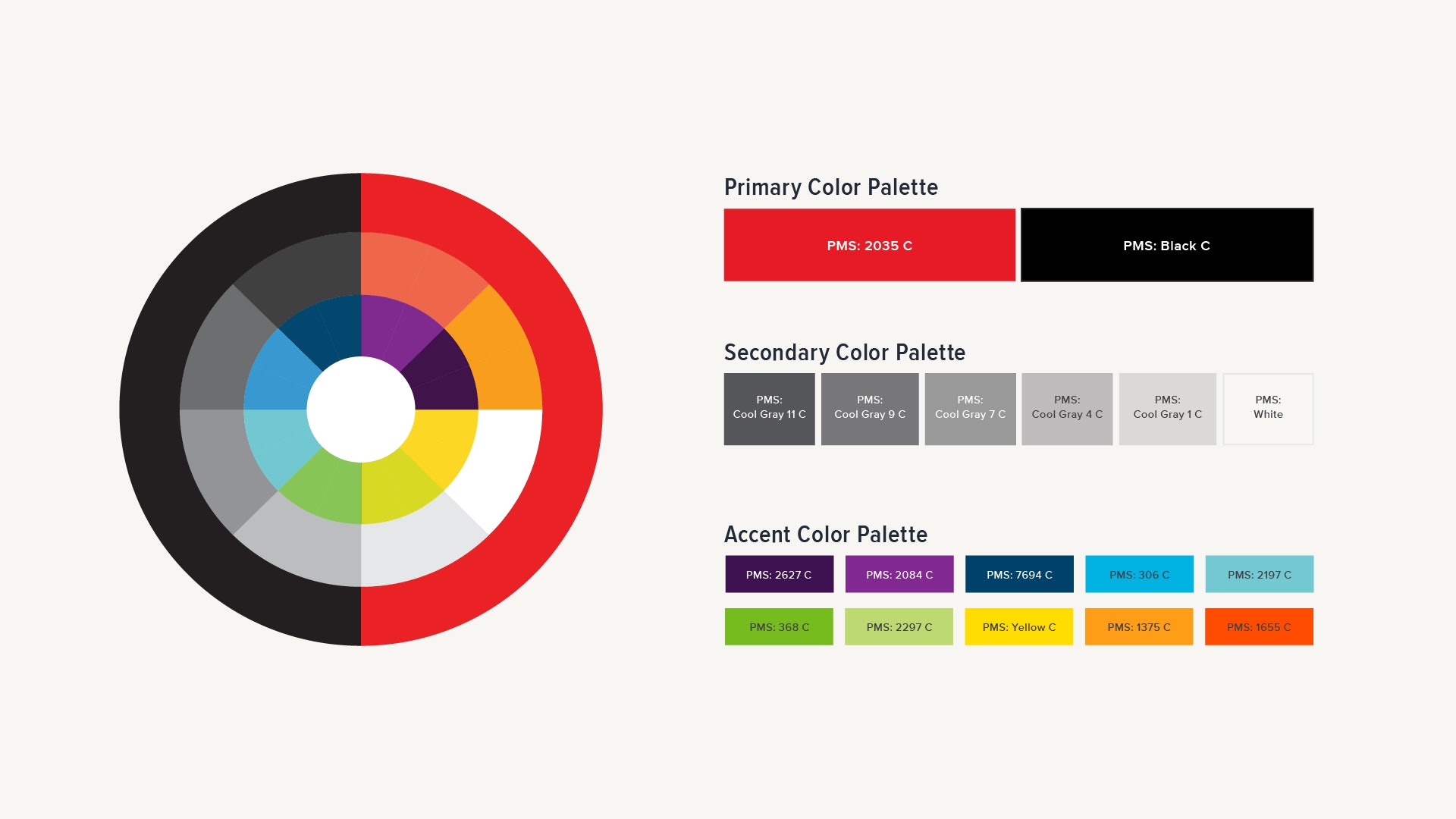Apple. Disney. Coca-Cola.
When you think of iconic brands, these are just a few that come to mind. Over the years, each has built its own unique identity, and they have become some of the most widely recognized, powerful, and profitable brands of all time.
Creating a brand that’s on par with Apple or Disney might seem impossible—especially if you’re working in a less-than-sexy industry or you buy into the myth that brand isn’t as important when it comes to B2B. But the good news is that building your brand identity and strategy is a process—one that the branding greats also had to go through (and continue to go through).
What is brand identity?
There are a lot of words that marketers throw out when talking about brand—branding, brand identity, brand elements, brand image…and the list goes on.
It can get confusing, even if you are a seasoned brand marketer.
Although there is some crossover between these terms, brand identity refers to the visual assets, identifiers, and expressions of a brand—created by the brand—in order to separate itself from the competition. Brand identity is what a company creates to promote how they want to be perceived. Brand image, on the other hand, is how the market perceives the company (that is, their reputation).
Some common elements that make up brand identity include:
- Tone and messaging
- Brand logo
- Brand personality
- Target audience and personas
- Company culture
An example of brand identity: Target
When you think about Target, you probably picture the color red. Or the miniature bull terrier with a target on its eye. Or the playful, flamboyant ads.

These are all elements of Target’s brand identity—symbols, visuals, and a specific type of personality that they’ve created to convey their identity to the marketplace. They’re a brand where, when they create a commercial, the viewer already knows it’s a Target commercial before they reveal their logo. That’s brand identity.
How to find your brand identity
Finding your brand identity can be a long, emotional journey. In the end, though, it’s almost always worth it.
Start with brand research
The process of uncovering and building your identity should start with brand research. There are two main parts to the research process: gathering the data, and analyzing it.
Step 1: Gathering the data
Brand research should be focused on gathering information and feedback from both your external community (customers, users, clients) and your internal community (employees, executives, and stakeholders). The most common types of brand research in this phase are surveys, interviews, focus groups, and digital analysis.
Step 2: Analyzing the data
You might start to pick up on themes from the information gathered—or even feedback that contradicts what another group or person said. Your job is to make note of all of it, and then understand how each group currently views you.
Audit your current brand and competitors
Before you start crafting your brand identity, you also need to get the pulse of your situation—that includes auditing your communication and visual assets, along with those of the competition.
When performing your communications audit, you’ll gather your current brand assets—everything from your website and digital ads to brand personality and imagery—and take a step back. If it looks like a big, hot, inconsistent mess, you’ll have some work to do.
For the competitive audit, you’ll likely use data from your brand research (surveys, interviews, focus groups) along with your own knowledge of the brand to create a list of online and offline competitors. Then you’ll assess their brand identity, as well as your own, to gain a clear view of your niche in the marketplace. This will help you position your brand strategically.
Find your “why”
You’re probably familiar with Simon Sinek’s TED Talk about finding your why. The concept is to start with your company’s “why”—why your business exists and what motivates it—rather than the what or the how. Sinek points out that brands often know a lot about their product or their process, but they don’t have a great understanding of why they’re selling their products or how to communicate that to their customers.
Finding your why is critical. It gets to the essence of your brand and serves as the core of your brand identity. For Apple, their “why” is that they believe in challenging the status quo and that they “think different.” As you can imagine, that’s a more compelling reason to buy from their brand than if they led with “we sell computers.”
find the five key elements of your brand with the brand wheel
The five key elements of a brand are positioning, promise, personality, purpose, and expression. Defining each can feel overwhelming at times—there’s a lot to consider and it’s easy to get lost. That’s where a brand wheel comes in handy.
A brand wheel is a templated approach to understanding your brand by breaking it down into five categories that closely align with the five key elements of a brand.
Brand expression is the final piece of the brand identity process—you can’t jump ahead and expect to get it right. We only begin bringing the brand to life visually after we have a good understanding of the other brand elements, as showcased in our brand wheel.
- Attributes (Positioning): The basic overview of what you sell or what service you provide
- Benefits (Promise): What your customer gets when they buy from you instead of your competitors, your unique appeal
- Core values (Personality): What your business celebrates and encourages
- Personality (Personality): Traits that describe your employees and office culture
- Essence (Purpose): Your why, your reason for existing

You shouldn’t rush this process, nor should you overthink it. The important part is to be true to who you are and what you’ve heard in your research. That’s how you’ll create an authentic brand identity.
Dress up the foundation with visuals, messaging, and tone of voice
This is typically the part people think about when they hear “brand identity”—fonts, colors, logos, taglines, messaging, and more. It’s also the fifth brand element: expression. It’s the exciting part, when designers, creative directors, copywriters, and art directors get to take all the information you’ve gathered and translate it into a visual identity for your audience.
And, finally, create brand guidelines
To make sure everyone uses your revitalized branding in the right way, it’s important to create brand guidelines (also called everything from a brand standards guide to brand identity guidelines).
No matter what you call them, brand guidelines are a tool designed to give your brand both consistency and flexibility. While these guidelines do cover a lot of the design elements of the brand identity, they’re also a resource everyone in the company can use to better understand the brand going forward.

An example of brand guidelines we put together for Airhead Sports Group
Ready for the rollout
If there was one piece of advice any marketer would give when going through the brand development process, it’s this—be true to yourself. Authenticity rules when it comes to crafting a brand identity. Don’t pretend to be something you’re not.
The second piece of advice? Don’t underestimate the brand launch and rollout—it could make or break all the work you’ve put in.





